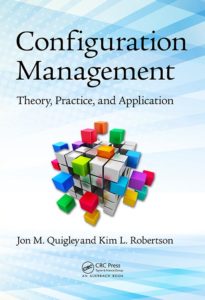Evolution of the Horseless Carriage
In preparation for our trip to Eindhoven University of Technology to lecture on Configuration Management, we provide a brief excerpt on the evolution of the horseless cariage.

New Configuration Management book
Traditionally new market segments open due to the need to solve a problem. Such problems may be real as in the case of the environmental crisis solved by the automobile or the need may be concocted. New markets and products are rarely developed through the inspiration of a single individual. The automotive market came about through a synergy of the existing body of knowledge and other environmental conditions both in the marketplace and in the nature.
One topic of discussion at the world’s first international urban planning conference in 1898 was the growing health concerns due to horse excretions and the creatures that accompanied them. As the primary means of locomotion for wagons and other forms of transport, horse populations exceeded human population in cities.*
Manufacturers of “horseless carriages” using steam, electric, and internal combustion engines as the motive force attempted to meet the challenge. Gasoline was found unsuitable at first as a fuel for combustion engines so Henry Ford’s Model T was designed to use ethanol. Steam- and electricpowered vehicles held an early advantage but were eclipsed in the market by the combustion engine. Nicolas Joseph Cugnot built the first steam tractor in 1769. By 1881, Amédée-Ernest Bollée’s La Rapide achieves the impressive speed of 62 km/h. Electric cars improved to the point that in 1899 Camille Jénatzy’s electric automobile “La Jamais Contente” set a world record for land speed of 100 km/h.
The success of the combustion-powered vehicle is no different than three species competing for the same ecosystem, where one develops an advantage over the other two. Eventually, the species with the greatest advantage gains a dominant position in the ecological environment. A similar struggle in the automotive environment is going on today. Due to the changes in the current environment, ethanol and electric are again in competition or being combined with the internal combustion engine as viable competitors in the automotive market segment.
* Morris, E. (2007). From Horse Power to Horsepower. Berkeley, CA: University of California Transportation Center—ACCESS number 30.
